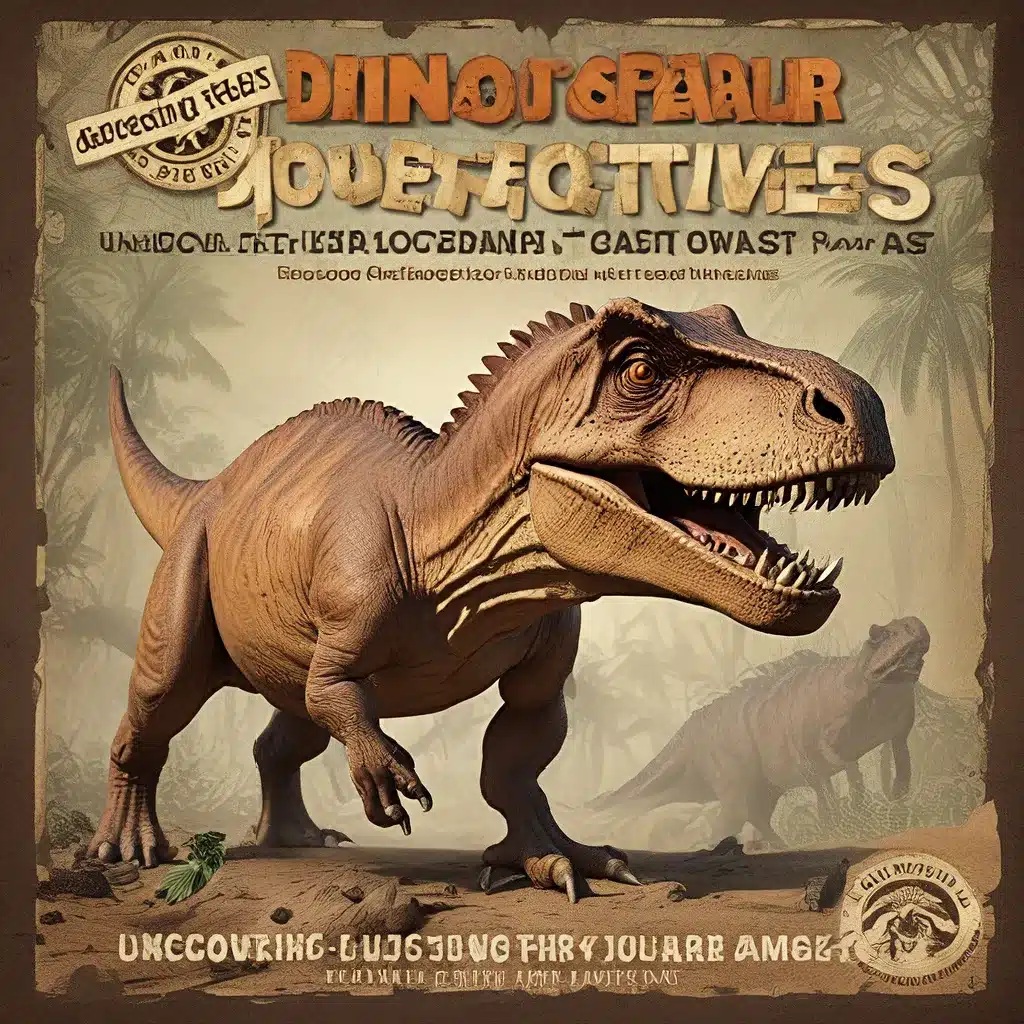
Dinosaurs have long captivated the imagination of both young and old, transporting us to a bygone era when these colossal creatures roamed the Earth. As paleontologists, the modern-day detectives of the prehistoric world, continue to uncover new fossils and unravel the mysteries of the past, our understanding of these ancient behemoths continues to evolve.
Uncovering the Secrets of the Cretaceous
One of the most exciting frontiers in dinosaur research is the vast, untapped potential of Montana’s fossil-rich landscapes. The Two Medicine Dinosaur Center and the broader Montana Dinosaur Trail have become hubs of activity, drawing in curious adventurers and seasoned paleontologists alike. As the state with the most dinosaur bone discoveries in the United States, Montana offers an unparalleled opportunity to step back in time and witness the remnants of the Cretaceous Period, a geological era when dinosaurs were at the height of their dominance.
Exploring these ancient sites is no easy feat, however. Paleontologists must meticulously scour the terrain, searching for the slightest hint of a fossilized bone or footprint. The key, as one researcher from the Two Medicine Dinosaur Center explains, is to “look for something different” – a telltale sign that could lead to a groundbreaking discovery. Armed with a keen eye and a trusty paintbrush, these modern-day explorers carefully dust off and examine each potential fossil, looking for the distinct patterns and features that distinguish genuine dinosaur remains from ordinary rocks.
Once a promising specimen has been identified, the real work begins. Paleontologists employ a range of techniques, from the “stick test” to “float mapping,” to determine the origin and significance of their find. By carefully mapping the distribution of smaller bone fragments, known as “float,” they can trace the source of the fossils and uncover the full extent of the prehistoric remains hidden beneath the surface.
Piecing Together the Puzzle of Dinosaur Evolution
The information gleaned from these painstaking excavations not only sheds light on the individual dinosaurs themselves but also contributes to our broader understanding of their evolution and the dramatic changes that swept across the planet during the Mesozoic Era. Barnum Brown, a pioneering paleontologist who worked at the American Museum of Natural History in the late 19th and early 20th centuries, was a true trailblazer in this field, making countless groundbreaking discoveries that continue to shape our knowledge of dinosaurs today.
One of the most fascinating aspects of dinosaur research is the way in which new technologies and scientific approaches are constantly pushing the boundaries of what we know. Advanced imaging techniques, such as CT scans, allow paleontologists to peer deep into the internal structure of fossils, revealing insights that were previously inaccessible. Meanwhile, the principles of biomechanics are helping scientists reconstruct the movement and behavior of these colossal creatures, shedding light on their adaptations and the way they interacted with their environments.
The Extinction Event that Shook the World
Of course, no discussion of dinosaurs would be complete without addressing the mysterious circumstances that led to their ultimate downfall. While the mass extinction that occurred at the end of the Cretaceous Period remains a subject of intense debate, the prevailing theory suggests that a catastrophic asteroid impact was the primary driving force behind this cataclysmic event.
The evidence for this event, known as the Cretaceous-Paleogene (K-T) extinction, is found in the distinctive “iridium layer” that can be detected in the geological record worldwide. This thin band of sediment, enriched with the rare element iridium, is thought to have been deposited by the dust and debris thrown into the atmosphere by the enormous impact, causing dramatic climate changes that made it increasingly difficult for non-avian dinosaurs to survive.
While the extinction of the non-avian dinosaurs marked the end of an era, it also paved the way for the rise of a new dominant species: birds. Paleontologists have long recognized the close evolutionary relationship between dinosaurs and modern avian species, with many of the skeletal features and adaptations shared between the two groups. This discovery has not only shed light on the origins of our feathered friends but has also helped us better understand the broader evolutionary journey of life on our planet.
Unlocking the Mysteries of the Past
As the field of paleontology continues to evolve, so too does our understanding of the prehistoric world. From the vast, untapped fossil beds of Montana to the cutting-edge research techniques employed by scientists around the globe, the story of dinosaurs is one of constant discovery and revelation.
Whether you’re a lifelong dinosaur enthusiast or simply curious about the wonders of the ancient past, the journey of the Dinosaur Detectives offers a captivating window into a world that has long captured the human imagination. By following in the footsteps of these modern-day explorers, we can uncover the clues that lie hidden underfoot and unlock the secrets of the prehistoric past.
So, the next time you find yourself traversing the rugged landscapes of Montana or wandering the halls of a natural history museum, take a moment to imagine the colossal creatures that once roamed these same spaces. Who knows what incredible discoveries await, just waiting to be unearthed by the next generation of Dinosaur Detectives?


